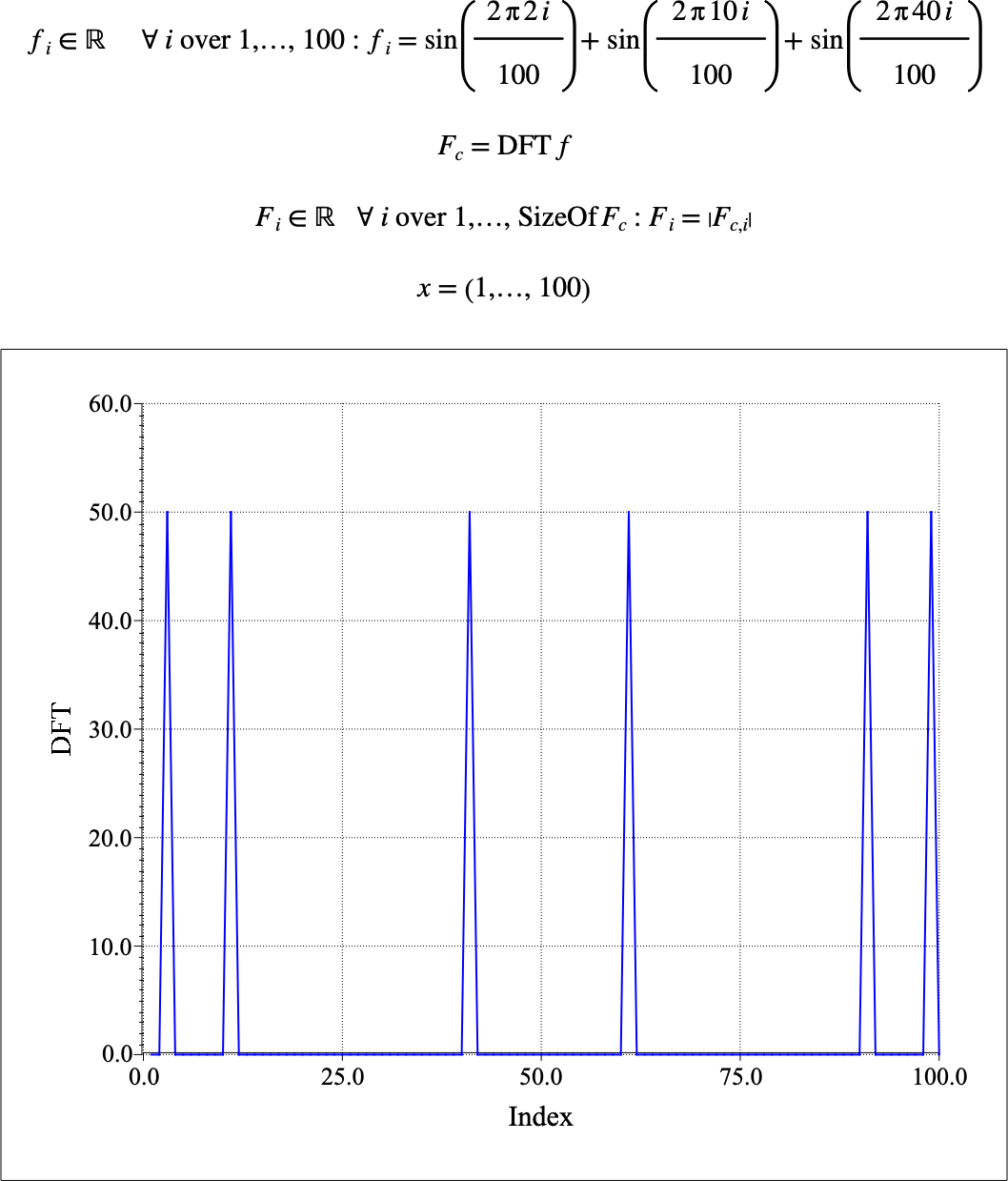\(\text{DFT}\)¶
Calculates the discrete Fourier transform (DFT) of a matrix in one or two dimensions.
You can use the \dft backslash command to insert this function.
The following variants of this function are available:
\(\text{complex matrix } \text{DFT} \left ( \text{<matrix>} \right )\)
The \(\text{DFT}\) always returns a complex matrix independent of the type of the supplied input. Also note that the function assumes a cartesian representation of complex values rather than a polar representation. The returned matrix will have the same dimensions as the supplied input matrix.
This function calculates the DFT in one dimension using the relation:
In two dimensions, this function calculates the DFT using the relation:
Figure 124 shows the basic use of the \(\text{DFT}\) function.

Figure 124 Example Use of The DFT Function¶
